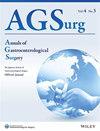Risk factors for pneumonia after endoscopic laryngopharyngeal surgery in cases with prior esophageal cancer treatment
Abstract
Background and Study Aims
Endoscopic laryngopharyngeal surgery is an effective treatment for superficial laryngopharyngeal cancer, particularly in cases with prior esophageal cancer treatment. Despite its frequent application, reports on the risk factors for postoperative complications are limited. This study aimed to identify the risk factors for pneumonia after endoscopic laryngopharyngeal surgery and to examine the variations in pneumonia incidence among the types of prior esophageal cancer treatment.
Methods
Patients who had a history of esophageal cancer treatment and subsequently underwent endoscopic laryngopharyngeal surgery for superficial pharyngolaryngeal cancer were retrospectively analyzed. We examined the association between postoperative pneumonia and several factors, including number of lesions; diameter of the resected lesion; and type of previous esophageal cancer treatment, such as endoscopic submucosal dissection, chemoradiotherapy, and esophagectomy.
Results
The study included 79 patients who had a mean age of 67.4 years. Postoperative pneumonia occurred in 16.4%. Multivariate analysis showed that the pneumonia incidence significantly increased in cases with multiple lesions (OR 4.794, 95% CI 1.133–20.288, p = 0.033) and larger diameter of the resected lesion (OR 7.047, 95% CI 1.791–27.730, p = 0.005). Importantly, compared with other treatments, prior esophagectomy for esophageal cancer did not increase the pneumonia incidence.
Conclusions
Multiple lesions and larger lesion diameter were the significant predictors of postoperative pneumonia. Moreover, endoscopic laryngopharyngeal surgery can be safely performed even in patients who have previously undergone esophageal cancer surgery, although careful monitoring remains necessary.


 求助内容:
求助内容: 应助结果提醒方式:
应助结果提醒方式:


